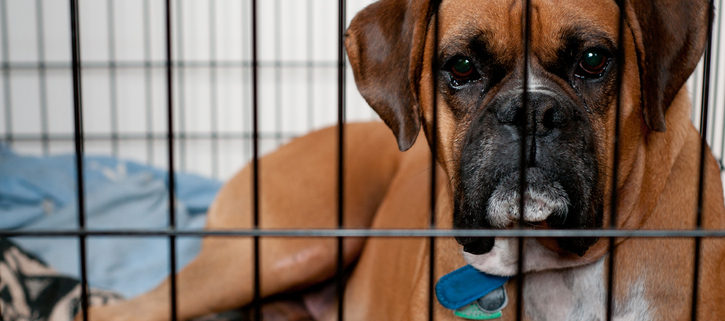Crate Training-Why They Work
This topic has been controversial since I started showing dogs over 20 years ago. Many people feel that it is cruel, a “doggie jail”, and unacceptable. This article is to dispel the myths about crate training and is a 3 part series to include: 1) crate training a puppy and 2) crate training an adult.
The first topic I would like to address is the crate for your fur baby. I have found myself in some very heated discussions about why I crate train. Considering your pet a “den” animal seems to be at the heart of the debate. My rationale is…. It has long been established that dogs are den animals. Examples: Dog “mothers to be” will seek a den to whelp their litter. Injured dogs will find a small secluded place when they are injured to convalesce or quietly pass away. The opposition… Dogs aren’t meant to be kept in confined places and cause the dog stress. I do, and still strongly disagree with the latter, based on life experience. This is not to say that I, in any way, condone leaving a dog crated for hours on end. It is also imperative that a dog is crate trained properly. I don’t crate adult dogs for more than 4 hours without a potty break and puppies need far more breaks depending on age.
The purpose for crating a dog is simple. It gives your dog a safe, quiet place to relax at home and provides a safe way to transport your dog.
Another topic that I find myself addressing is the “time out”. Crates should never be used as punishment. My dogs are fed in their crates and used only as a positive experience. If they are getting a “time out”, they never know it. I like to reinforce with toys, such as a “Kong” or a hard chew toy that can not be ingested. This has proven invaluable if I have work being done on the house with multiple people going in and out.
There are a couple of crates that I use routinely. For the house, I use wire crates. They are easily broken down and can be moved throughout the house should I need to. The other type of crate I use is for transport. I prefer the hard plastic crates for transport. I feel they are safer in the event of an accident over a wire crate as they are more sturdy.
Choosing the right size of crate is also important. Your full grown dog needs to be able to stand up on all fours and be able to complete a 360-degree turn in the standing position.
Crate training can give your dog a safe and comfortable place to relax. My fur babies actually will sleep in their crates without being asked (sometimes in the same crate, just to be cozy).



